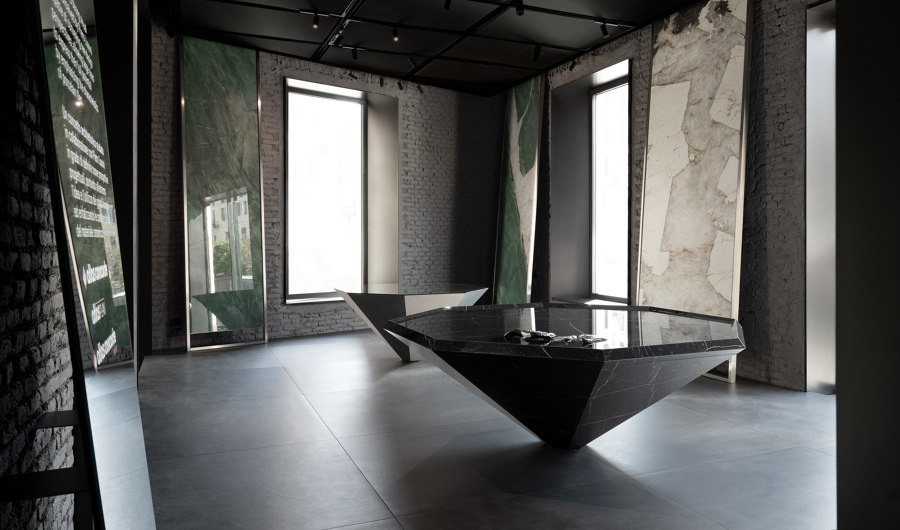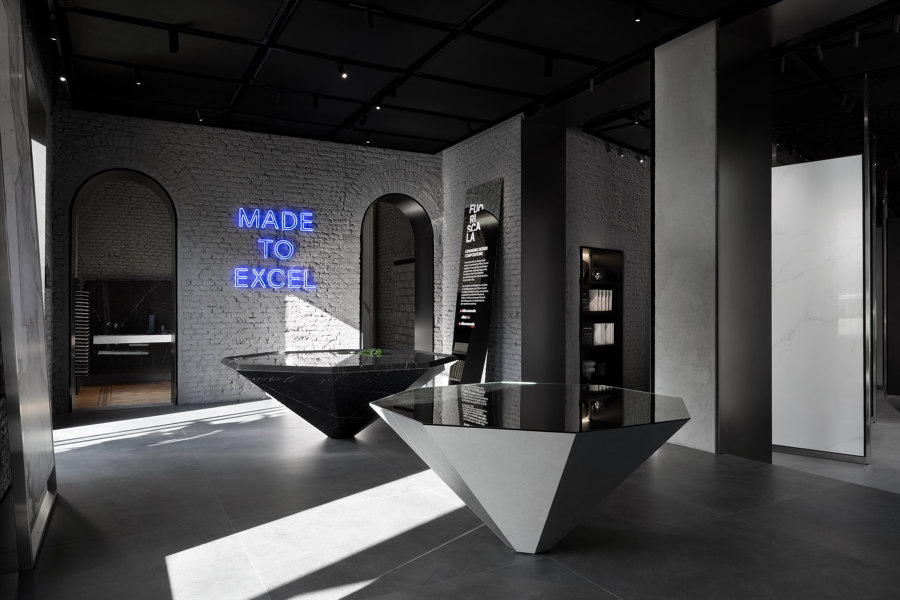Pushing the boundaries of surface design: Atlas Concorde x Piero Lissoni
Brand story by Simon Keane-Cowell
Spezzano di Fiorano (MO), Italy
11.05.23
A collaboration with Italian design icon Piero Lissoni, Atlas Concorde’s ‘Fuoriscala’, unveiled at this year’s Salone, takes oversized ceramic formats to the extreme. Architonic spoke with Lissoni about the creative process, reflecting on scale, materials and surface design...
Atlas Concorde, specialist in ceramic tile excellence, displayed its ‘Fuoriscala’ stand at the Salone del Mobile 2023, showcasing large-format furnishing slabs
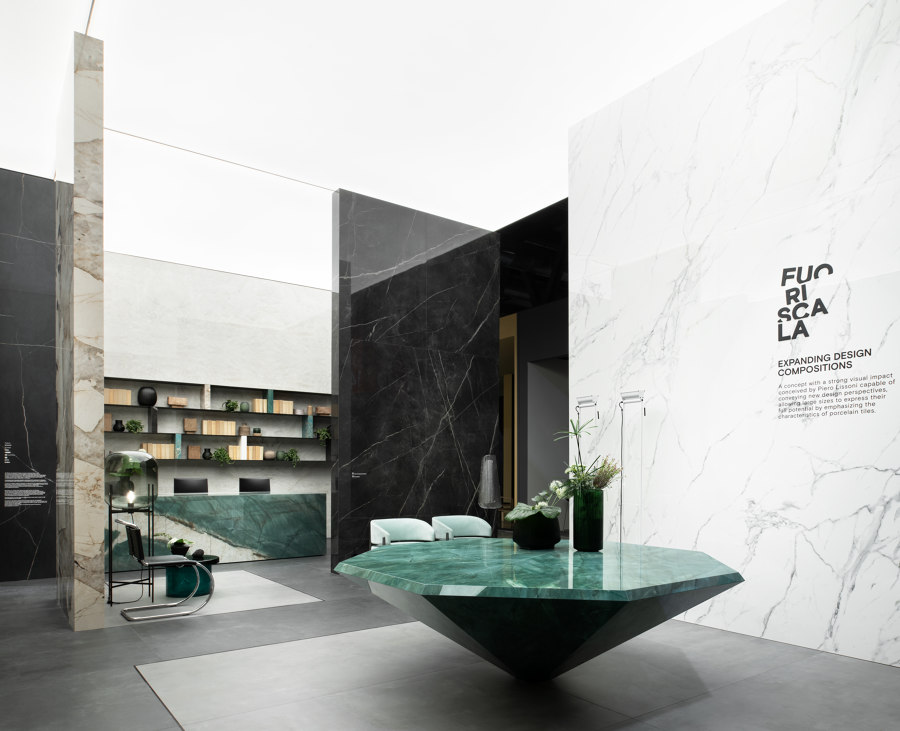
Atlas Concorde, specialist in ceramic tile excellence, displayed its ‘Fuoriscala’ stand at the Salone del Mobile 2023, showcasing large-format furnishing slabs
×For an architect who’s long cemented his status as one of the most-coveted creative directors and designers in the Italian design industry, it’s perhaps logical that Piero Lissoni should perform a reversal – using the very products his office has developed for Atlas Concorde, specialists in porcelain and ceramic surfaces for interiors and outdoors to architecturally define two temporary spaces during Milan Design Week 2023.
Entitled ‘Fuoriscala’ – meaning ‘outsized’ or ‘off the scale’ – his stand concept at the Salone del Mobile and his installation at the Atlas Concorde Studio Milano on the Via San Marco used the large-format furnishing slabs that the manufacturer can produce in heights of up to an impressive four metres to create the very architecture of the two locations. Think product as project.
The Italian brand expanded its presence at Milan Design Week with a modern, impactful stand at the Salone (top) and an installation at the company’s showroom in Via San Marco (below)
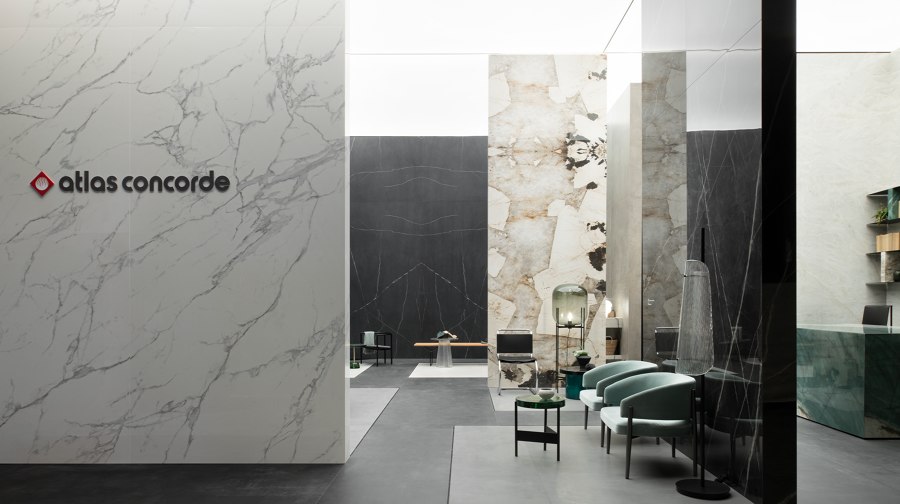
The Italian brand expanded its presence at Milan Design Week with a modern, impactful stand at the Salone (top) and an installation at the company’s showroom in Via San Marco (below)
×The monolith as an archetype is what Lissoni had in mind. So revealed the architect to me when I sat down with him at the Milan fair a few weeks ago to discuss the collaboration. But it’s more than just a virtuosic statement. At the heart of it lies the invitation to think carefully about our choice of materials. Atlas Concorde’s commitment to porcelain surfaces that strongly echo natural stone means that the use of the latter, and in particular marble, can be eschewed. But, beware. These are not wannabe facsimiles of nature. ‘Redesigning the natural’ is how Lissoni puts it. For him, surfaces are the new boundaries. It’s time to push them.
Besides allowing the large ceramic formats to express their full potential, ‘Fuoriscala’ invites attendees to carefully reflect on material choices
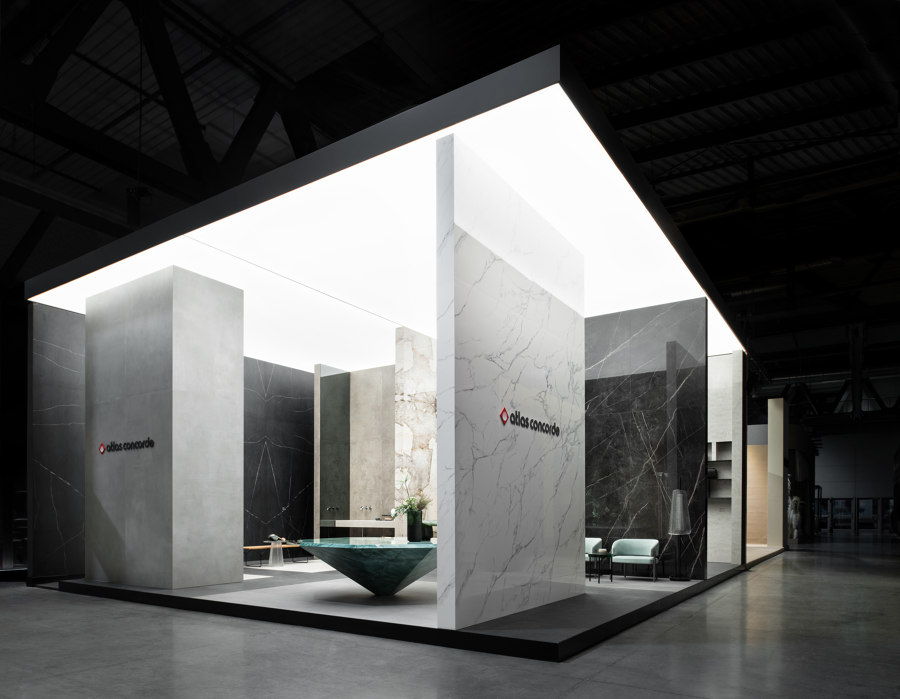
Besides allowing the large ceramic formats to express their full potential, ‘Fuoriscala’ invites attendees to carefully reflect on material choices
×Architonic: What are we looking at here? What is this space? How would you describe it?
Piero Lissoni: In my mind, the idea was to design a kind of museum space with a monolith of stones. Something dramatic. We show the material without the classical attitude to be functional. I show it in the form of architectural monoliths. Do you remember ‘2001: A Space Odyssey’?
Yes, of course. The iconic Stanley Kubrick film. The scene with the monolith and the apes…
Exactly. I tried to use the monolith and nothing more. Because I’m an architect, I like this archetype of architecture. It’s something more than just a column.
Right. Because if you think about something like a column with a Corinthian capital – yes, it can be incredibly decorative, but it still has a structural function. Whereas a monolith is purely a free-standing element in space.
It's something in the middle of something. And that's it.
Quite powerful.
Yes. It’s iconic. No shape and no form.
Reminiscent of stone monoliths, the large slabs recall the primary and archetypal forms of architecture

Reminiscent of stone monoliths, the large slabs recall the primary and archetypal forms of architecture
×How important in your architectural or interior-architectural work are surfaces? The treatment of surfaces?
Surfaces for me, they’re the new boundaries, the new borders. We need to be using the quality of surfaces better. It’s often no longer an option to use natural-material surfaces, but we still have a need for them sometimes – for example for a big project or an unusual floor or ceiling or whatever you want. Here’s where we need to change our attitude. Now is no longer the time to be using, for example, marble walls. Come on.
‘This is the time to push the limits and redesign the natural’
It’s interesting, knowing that there are certain natural materials that we should probably no longer be using. I mean, aesthetically, stylistically, it can go in two directions – either we find a new language for surfaces or, as we see here, we use new production technology to create a facsimile of the natural.
Yes, but we didn’t only create a facsimile with Atlas Concorde. We tried to redesign a naturality because in the end we know very well the differences – we are not stupid. But this is the time to push the limits and redesign the natural.
And why is it important to have this connection with a sense of the natural still, do you think?
Well, it’s easy to show and it's easy to talk about. That plain ceramic over there; we produce it in 90 colours, with 22 different whites. It’s much easier to explain a ‘new natural stone’ than ten different whites, because people sometimes don’t understand this so quickly.
In the Atlas Concorde Studio Milano – the showroom located in the heart of the Brera Design District – ‘Fuoriscala’ reinterprets the ‘table’ concept by bringing to life two large-scale, abstract elements with prismatic shapes

In the Atlas Concorde Studio Milano – the showroom located in the heart of the Brera Design District – ‘Fuoriscala’ reinterprets the ‘table’ concept by bringing to life two large-scale, abstract elements with prismatic shapes
×When you're designing an interior, at what point in your creative thinking do you start thinking about surfaces?
Right at the beginning. Sometimes I design the surfaces before, and after that I adapt the project around the surfaces. I often start with a special feeling. A feeling about materials or colours. I use smell. You need to close your eyes and think ‘What happened?’
‘I often start with a special feeling. A feeling about materials or colours’
For example, I’ve started on the design of a beautiful villa outside Tel Aviv. I fixed in my mind before I started to design the house – before I knew the volume or the language of the architecture – two different topics: wood and this kind of industrial-concrete surface. That’s it. And now I’ve started to design the house around these. (Laughs)
It’s like the opposite of someone like Frank Gehry, I guess, who starts with a volume, with a shape. And starts cutting bits off it…
You know, I don't know for you, but, when I dress myself, first I choose the shirt and then I combine the rest around it.
I start with the underpants, I think.
(Laughs). It’s definitely the shirt with me.
Both on the Fuorisalone circuit and at the Salone, architectural forms are reversed to become products and vice versa. Boundaries are pushed; limits are redefined
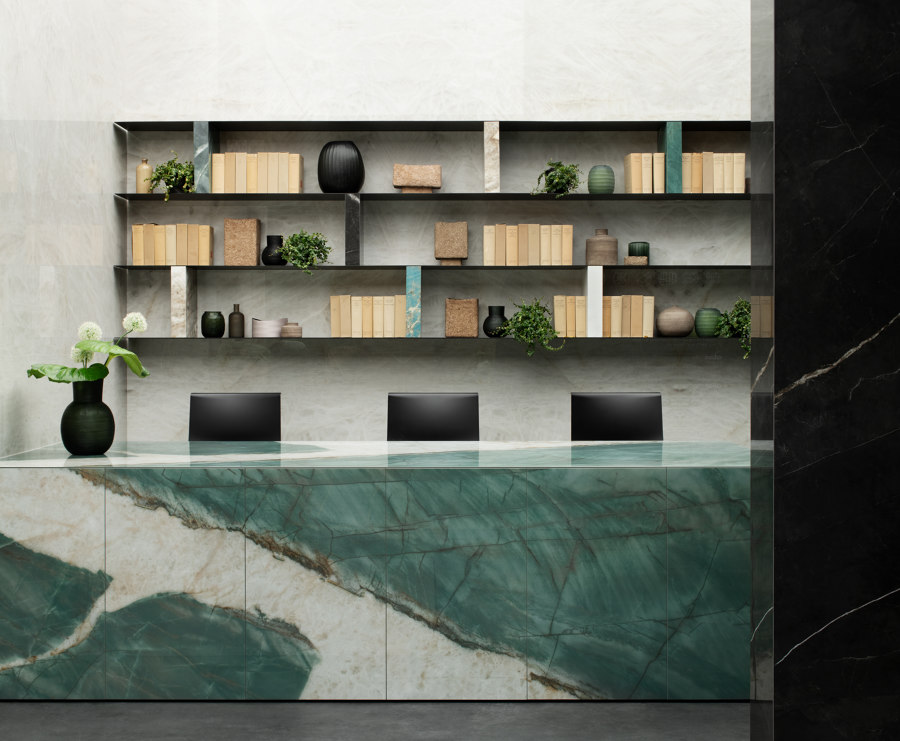
Both on the Fuorisalone circuit and at the Salone, architectural forms are reversed to become products and vice versa. Boundaries are pushed; limits are redefined
ש Architonic
Head to the Architonic Magazine for more insights on the latest products, trends and practices in architecture and design.


